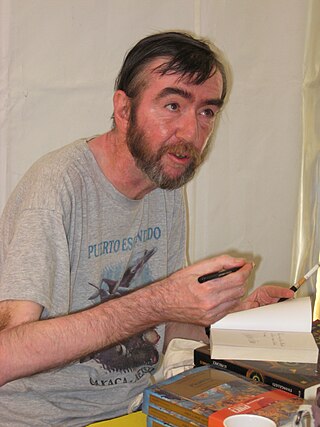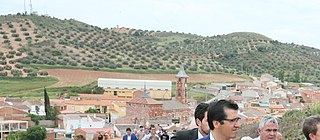
The Inquisition was a judicial procedure and a group of institutions within the Catholic Church whose aim was to combat heresy, apostasy, blasphemy, witchcraft, and customs considered deviant. Violence, torture, or the simple threat of its application, were used by the Inquisition to extract confessions and denunciations from heretics. Studies of the records have found that the overwhelming majority of sentences consisted of penances, but convictions of unrepentant heresy were handed over to the secular courts, which generally resulted in execution or life imprisonment. The Inquisition had its start in the 12th-century Kingdom of France, with the aim of combating religious deviation, particularly among the Cathars and the Waldensians. The inquisitorial courts from this time until the mid-15th century are together known as the Medieval Inquisition. Other groups investigated during the Medieval Inquisition, which primarily took place in France and Italy, include the Spiritual Franciscans, the Hussites, and the Beguines. Beginning in the 1250s, inquisitors were generally chosen from members of the Dominican Order, replacing the earlier practice of using local clergy as judges.
Year 1369 (MCCCLXIX) was a common year starting on Monday of the Julian calendar.

Ferdinand IV of Castile called the Summoned, was King of Castile and León from 1295 until his death.

Tomás de Torquemada, also anglicized as Thomas of Torquemada, was a Castilian Dominican friar and first Grand Inquisitor of the Tribunal of the Holy Office. The Spanish Inquisition was a group of ecclesiastical prelates that was created in 1478, and which was charged with the somewhat ill-defined task of "upholding Catholic religious orthodoxy" within the lands of the newly formed union of the crowns of Castile and Aragon. The lands of this newly formed royal union are now known as the Kingdom of Spain.

Bernard Gui, also known as Bernardo Gui or Bernardus Guidonis, was a Limousin Dominican friar, Bishop of Lodève, and a papal inquisitor during the later stages of the Medieval Inquisition.

Bertrand du Guesclin, nicknamed "The Eagle of Brittany" or "The Black Dog of Brocéliande", was a Breton knight and an important military commander on the French side during the Hundred Years' War. From 1370 to his death, he was Constable of France for King Charles V. Well known for his Fabian strategy, he took part in seven pitched battles and won the five in which he held command.

Nicholas Eymerich was a Roman Catholic theologian in Medieval Catalonia and Inquisitor General of the Inquisition in the Crown of Aragon in the later half of the 14th century. He is best known for authoring the Directorium Inquisitorum, that mostly summarized previous texts and mores.

The White Company is a historical adventure novel by British writer Arthur Conan Doyle, set during the Hundred Years' War. The story is set in England, France and Spain, in the years 1366 and 1367, against the background of the campaign of Edward the Black Prince, to restore Peter of Castile to the throne of the Kingdom of Castile. The climax of the book occurs before the Battle of Nájera. Doyle became inspired to write the novel after attending a lecture on the Middle Ages in 1889. After extensive research, The White Company was published in serialised form in 1891 in The Cornhill Magazine. Additionally, the book is considered a companion to Doyle's 1905–06 Sir Nigel, which explores the early campaigns of Sir Nigel Loring and Samkin Aylward.

Valerio Evangelisti was an Italian writer of science fiction, fantasy, historical novels, and horror. He is known mainly for his series of novels featuring the inquisitor Nicolas Eymerich and for the Nostradamus trilogy, all bestsellers translated into many languages. Some of his books are seen as part of the body of literary works known as the New Italian Epic.

The Directorium Inquisitorum is Nicholas Eymerich's most prominent and enduring work, written in Latin and consisting of approximately 800 pages, which he had composed as early as 1376. Eymerich had written an earlier treatise on sorcery, perhaps as early as 1359, which he extensively reworked into the Directorium Inqusitorum. In compiling the book, Eymerich used many of the magic texts he had previously confiscated from accused sorcerers. It can also be considered as an assessment of a century and a half of official Inquisition in the "albigensian" country.

Lope de Barrientos (1382–1469), sometimes called Obispo Barrientos, was a powerful clergyman and statesman of the Crown of Castile during the 15th century, although his prominence and the influence he wielded during his lifetime is not a subject of common study in Spanish history.

The Tribunal of the Holy Office of the Inquisition, commonly known as the Spanish Inquisition, was established in 1478 by the Catholic Monarchs, King Ferdinand II of Aragon and Queen Isabella I of Castile. It began toward the end of the Reconquista and was intended to maintain Catholic orthodoxy in their kingdoms and to replace the Medieval Inquisition, which was under papal control. It became the most substantive of the three different manifestations of the wider Catholic Inquisition, along with the Roman Inquisition and the Portuguese Inquisition. The "Spanish Inquisition" may be defined broadly as operating in Spain and in all Spanish colonies and territories, which included the Canary Islands, the Kingdom of Naples, and all Spanish possessions in North America and South America. According to some modern estimates, around 150,000 people were prosecuted for various offences during the three-century duration of the Spanish Inquisition, of whom between 3,000 and 5,000 were executed, approximately 2.7 percent of all cases. The Inquisition, however, since the creation of the American courts, has never had jurisdiction over the indigenous. The King of Spain ordered "that the inquisitors should never proceed against the Indians, but against the old Christians and their descendants and other persons against whom in these kingdoms of Spain it is customary to proceed".

Torreperogil is a town over 7,500 inhabitants in Province of Jaén, Andalucia, Spain. Their people in the "comarca" (region) are known by the use of the exclamatory phrase "¡Bárcia!". Other places in this municipality are El Paso, Los Pinos, the square El Prado from which the Cazorla Mountains are visible, and Las Torres Oscuras, the oldest part of the town, with architecture of the Middles Ages. It is also the location of several non-permanent events.

Montiel is a municipality of Spain located in the province of Ciudad Real, Castilla–La Mancha. The municipality spans across a total area of 271.22 km2 and, as of 1 January 2020, it has a registered population of 1,294.

The Granada War was a series of military campaigns between 1482 and 1492 during the reign of the Catholic Monarchs, Isabella I of Castile and Ferdinand II of Aragon, against the Nasrid dynasty's Emirate of Granada. It ended with the defeat of Granada and its annexation by Castile, ending the last remnant of Islamic rule on the Iberian peninsula.

Fernán Pérez de Andrade or Fernán Peres d'Andrade was a Galician knight. His birthdate is unknown but is presumably before 1330. His death date fell between July 28 and August 21, 1397. As the fourth son of Ruy Freyre de Andrade and Inés Rodriguez de Sotomayor, he belonged to a family associated with the knights of the Orden de la Banda since its founding by Alfonso XI of Castile in 1332. He was married to Sancha Rodríguez, daughter of Aras Pardo and Tareyga Affonso, and with whom he was known to have had two daughters, Maria and Inés Fernández, nuns of the Order of Saint Clare, and a son who died at an early age, leaving the family without a direct male heir.

The Castle of Burgos was a castle and alcázar, located in the city of Burgos, in the hill of San Miguel to 75 metres (246 ft) above the city and to 981 metres (3,219 ft) above the sea. This hill was the subject of archaeological surveys by General Centeno in the years 1925 and 1926 trying to find Napoleonic military files from when the French in their retreat blew up the fortress. According to the results obtained in this excavation the origin of the castle dates to the Visigoths, and its oldest parts, to the Romans.

The coat of arms of Castile was the heraldic emblem of its monarchs. Historian Michel Pastoureau says that the original purpose of heraldic emblems and seals was to facilitate the exercise of power and the identification of the ruler, due to what they offered for achieving these aims. These symbols were associated with the kingdom, and eventually also represented the intangible nature of the national sentiment or sense of belonging to a territory.

The Castilian House of Ivrea, also known as the House of Burgundy, is a cadet branch of the House of Ivrea descended from Raymond of Burgundy. Raymond married Urraca, the eldest legitimate daughter of Alfonso VI of León and Castile of the House of Jiménez. Two years after Raymond's death, Urraca succeeded her father and became queen of Castile and León; Urraca's and Raymond's offspring in the legitimate line ruled the kingdom from 1126 until the death of Peter of Castile in 1369, while their descendants in an illegitimate line, the House of Trastámara, would rule Castile and Aragón into the 16th century.

















